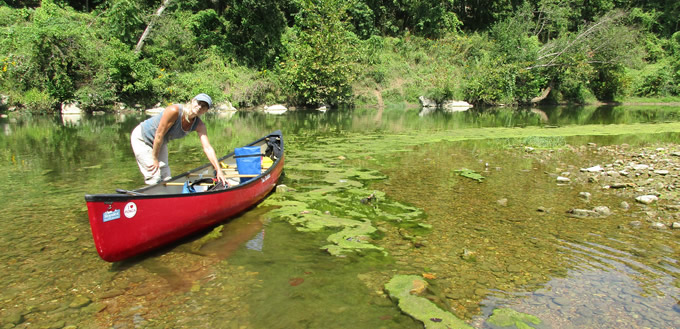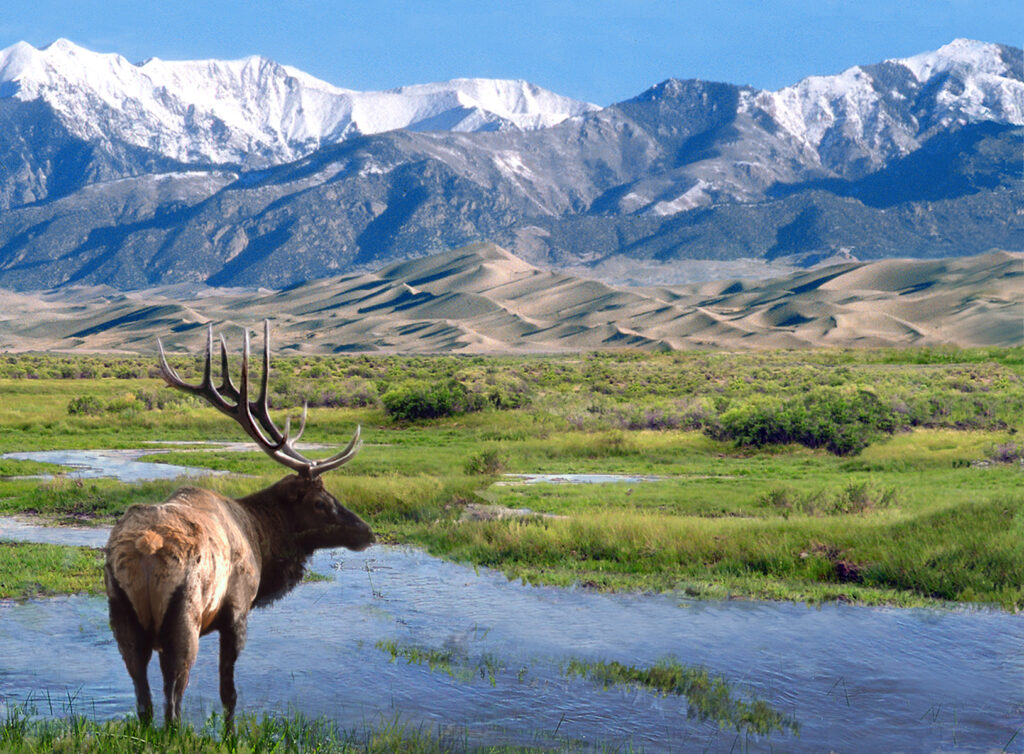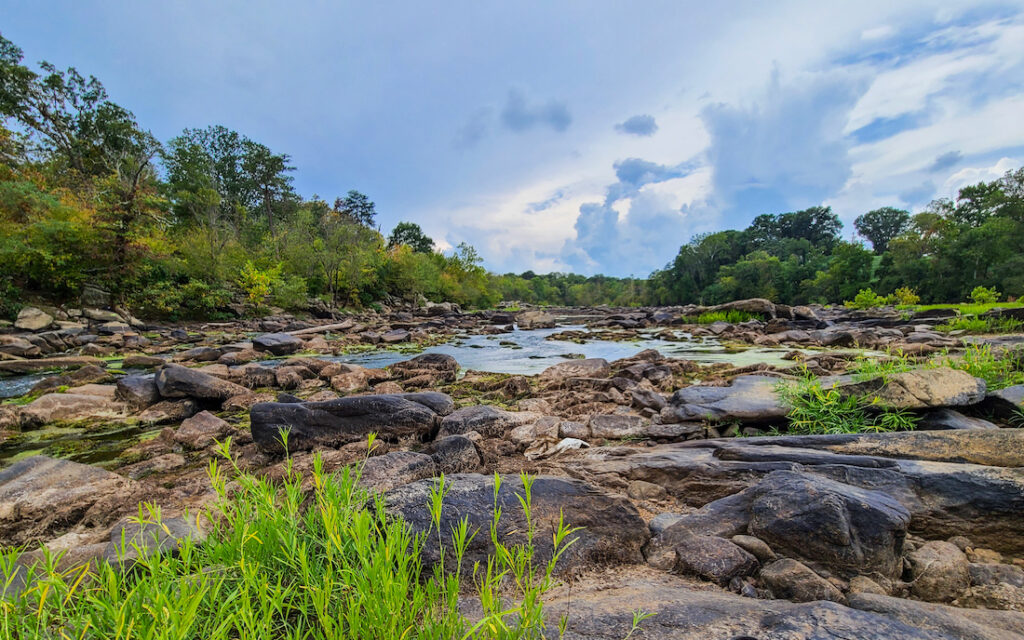The Realities of Industrial Farming
Guest author Lin Wellford dives into the environmental impacts of industrial farming, including what's at risk if a confined animal feeding operation is allowed to continue in the Buffalo National River watershed.

This guest blog by Lin Wellford is a part of our America’s Most Endangered Rivers® series on the Buffalo National River.
How would you react if a neighbor did something that suddenly altered your quality of life or the value of your property?
For too many folks in a rural areas, this isn’t just a rhetorical question. People who live in the country understand the realities of farming and raising animals. They know that in the spring, cattle growers may get a load of chicken litter applied to their pastures to help the grass grow, and the smell will be noticeable for a few days. Sometimes animals get out in the road and it’s neighborly to alert their owner. You might get stuck behind a slow-moving tractor now and again.
That’s life in the country. People look out for each other. They try to get along and be considerate.
If a neighbor decided to build a rural factory, complete with constant truck traffic in and out, plus industrial sounds and smells (very unpleasant smells at that, and not just a few times a year, but nearly year-round)… what would you do?
Neighbors surrounding an industrial-scale hog operation in tiny Mount Judea, Arkansas, have been living this new reality since discovering that a local man bought property up on a hill in the heart of their community. The factory turns out piglets by breeding 2500 sows in rotation, producing something like 80,000 animals yearly. The owners and proponents call it a farm.
Officially, it is classified as a confined animal feeding operation, or CAFO for short. In other words, it’s an indoor feedlot for pigs. Two giant metal buildings stand windowless, with exhaust fans running around the clock to keep the enclosed hogs from suffocating. The animals never see daylight, except through the slats of a truck transporting them to the facility where they will be finished, meaning fattened, before being shipped one last time to a slaughter house.
As someone who used to enjoy bacon and a good barbequed spare rib, learning about how pork is now mass produced was a real eye-opener. It is well known that pigs are as smart, perhaps even smarter, than many dogs. Yet these CAFO animals spend their entire lives either pregnant or nursing babies, within metal confinement pens inside these buildings.
The pig, who is curious and playful under normal circumstances, never experiences the sun on its back or ground under its feet.
The cement floors have metal grates, allowing waste to accumulate in a pit beneath the building. The floors are washed off at intervals and the pits are emptied into outdoor lagoons (basically open sewage ponds). From there the waste these animals produce, over 2 million gallons a year, is pumped into trucks and taken to a patchwork of fields where it is sprayed out onto the ground as often as possible.
Neighbors complain privately about the smell, the flies, and the traffic as the spray trucks make their circuit from the sewage lagoons to the fields and back. But no one complains too publicly. No one wants to be a bad neighbor.
In Pennsylvania, a family farm that operated for generations switched to this industrial model of mass producing swine. The neighbors had a year to make formal complaints, but they liked their neighbors and trusted them. The farmers, in turn, trusted the corporation that assured them this was a safe and efficient way to make a good living.
It was only after a year of operation that the constant presence of sprayed manure was impossible to ignore. By then, Pennsylvania law said nothing could be done. One neighbor found that she could not keep her swimming pool water clear after numerous treatments. Finally the pool tech asked if there was a CAFO in the area. She told him there was. He shrugged and said there was no way to counter the effects of airborne pollutants.
If what is in the air is messing up pool water, what is it doing to our rivers and streams, not to mention our lungs?
Many states are passing laws to protect landowners’ ‘right to farm’, even though the definition of farming has been altered radically in the past few decades. Shouldn’t neighbors also have the right to protect their way of life from being ruined by one landowner‘s choice to turn his farm into a factory?
The operators of these facilities don’t even own the animals under their care. But they do own the manure that is left behind and many find that the fields used to dispose of waste rapidly accumulate more nutrients than they can use. The result over time is often hay that is too high in nitrogen to make healthy fodder. Excess nutrients also find their way into the water table, impacting private wells and, eventually, local waterways.
Environmentalists are scolded for their reaction to having such an over-sized operation placed in fragile, environmentally sensitive areas. But the fact is that similar CAFOs have a history of polluting groundwater and rivers. The corporations will deny this up to the moment that the evidence becomes irrefutable. Contract growers will be left holding the mortgage for the facility, and the public will be on the hook to clean up the mess, while the corporation moves on to find another poor rural area in a state with lax environmental laws they can take advantage of.
[su_button url=”https://act.americanrivers.org/page/692/action/1″ background=”#ef8c2d” size=”5″ center=”yes”]Take action »[/su_button]
Lin Wellford has made her home in the Ozarks for more than 40 years. A retired author/artist, she now devotes her talents to environmental issues and community causes.




1 response to “The Realities of Industrial Farming”
Open letter to the Governor of Arkansas
November 12, 2017
Dear Governor Hutchinson,
You inherited an ADEQ that had no environmental compass. Here is a simple solution. Place these “10 Commandments of Arkansas” in the lobby of the ADEQ.
1. Arkansas is the Natural State….let’s keep it that way.
2. Remember the lesson learned in the Buffalo River Watershed
3. Always pay attention to the Canary in the Coal Mine…eg. CAFO Hog Farms in North Carolina, Iowa
4. Remember your mission statement…protect the Environmental Quality
5. Don’t allow out of state companies bring their problems to Arkansas
6. Remember we all live downstream.
7. Remember Air Quality is as important as Water Quality
8. Remember if an application smells fishy….it is probably fishy. “There’s a Big Stink on the Buffalo”
9. Your 72 page Draft is worthless if you do not use Common Sense..eg. C&H Hog Farm
10. Remember the citizens of Arkansas are watching you and will throw you out if you don’t do the above
en